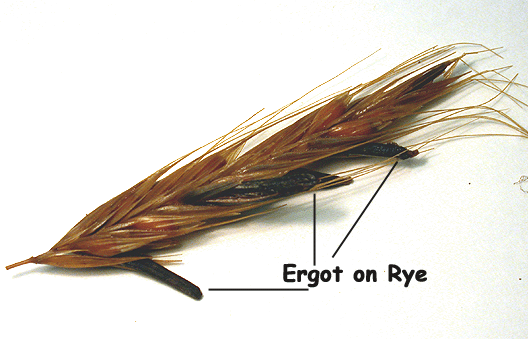Ergot to LSD
Ergot to LSD | Discovery| Chemical Structure | How It Works | LSD’s Affect on History | History’s Affect on LSD | References
Although LSD itself is synthetic, understanding basic knowledge of ergot, LSD’s primary derivative, is helpful to appreciate the circumstances under which LSD was created. Ergot, a naturally occurring fungus, grows upon rye and is recognized for its medical value. Historically, ergot has been the cause of mass poisonings across cultures (ergotism), and was also a probable cause of the Salem witch trials, as mentioned in Napoleon’s Buttons. Beginning in the late sixteenth century, the first recorded medical use of ergot was as a drug to help with childbirth. Unfortunately, this use was ultimately unable to be sustained, as it too often lead to uterine spasms and other dangers to the child, which are characteristics that ergot commonly shares with LSD. As a result, it wasn’t until 1930s that this research was fully re-established, leading to the discovery of lysergic acid as the shared component of all ergot alkaloids.

Tags: LSD

